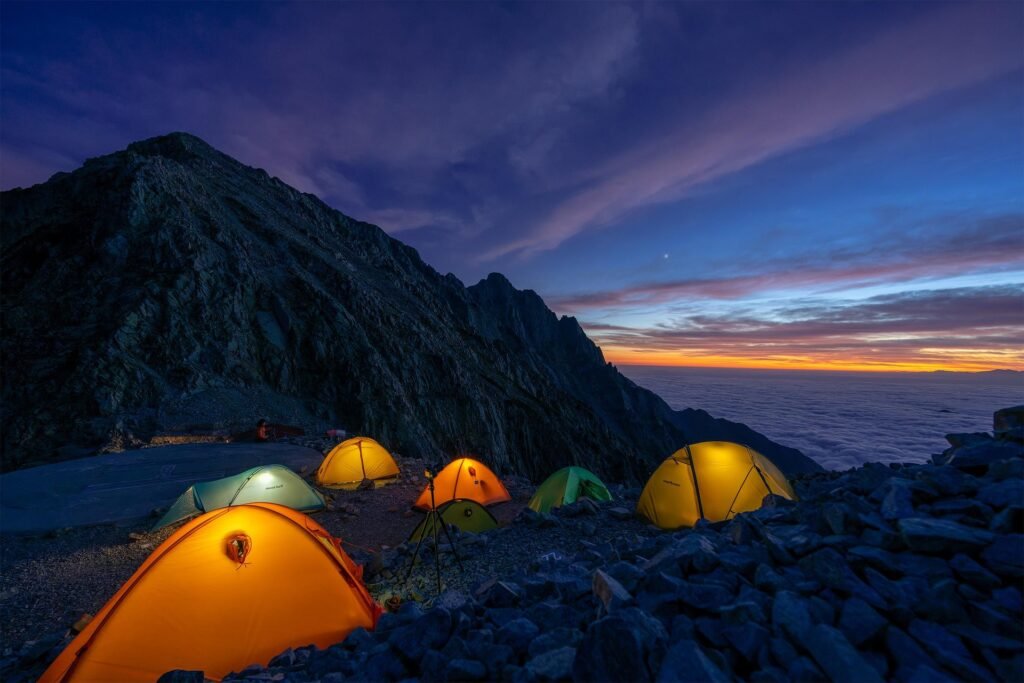The Albanian Alps: Europe’s Untamed Frontier
The Albanian Alps, known locally as Bjeshkët e Nemuna (the Accursed Mountains) or Prokletije in neighboring Slavic languages, represent one of Europe’s most captivating and least explored mountain ranges. Forming the southernmost subrange of the vast Dinaric Alps, these dramatic peaks span across northern Albania, western Kosovo, and northeastern Montenegro. Far from living up to their foreboding name, the Accursed Mountains are a pristine wilderness that beckons adventurers, nature lovers, and those seeking an authentic glimpse into highland life.

A Landscape Forged by Nature and Time
This majestic range is defined by its incredibly rugged and jagged peaks, carved over millennia by glacial activity and the relentless forces of erosion. The Albanian Alps are a prime example of a karst landscape, characterized by porous limestone and dolomite rocks. This geological makeup has led to the formation of numerous deep valleys, extensive cave systems, sinkholes, and unique rock formations that add to their allure. At 2,694 meters (8,839 feet), Maja Jezercë stands as the undisputed monarch of the Albanian Alps, dominating the skyline and offering challenging ascents for experienced mountaineers.
The region’s isolation has preserved an extraordinary biodiversity. Dense, ancient forests cling to the mountainsides, some of which are protected as UNESCO World Natural Heritage Sites, like the Gashi Strict Protected Area, home to pristine virgin beech forests. Wildlife thrives here, with elusive species such as the Balkan lynx, brown bears, and grey wolves roaming the untouched terrain, making it a critical habitat for European megafauna.
Gateways to Adventure: Valleys and Trails
The heart of the Albanian Alps’ appeal for visitors often lies within its stunning valleys. The Valbona Valley and Theth Valley are perhaps the most famous, serving as essential hubs for exploration. Valbona, a pristine glacial valley, offers breathtaking vistas of towering peaks and emerald meadows, often accessed via the incredibly scenic Komani Lake ferry. This ferry journey, winding through fjord-like canyons, is an experience in itself, frequently hailed as one of the world’s most spectacular boat trips.
Theth, on the other hand, is a traditional mountain village nestled deep within the range, renowned for its quaint stone houses, the iconic Blue Eye of Theth (a vibrant natural spring pool), and the elegant Grunas Waterfall. These valleys are connected by the immensely popular Theth to Valbona hiking trail, a challenging yet rewarding 12-kilometer route that traverses high passes and offers panoramic views, linking two distinct yet equally captivating communities.
For the serious trekker, the Peaks of the Balkans Trail offers an unparalleled adventure. This 192-kilometer cross-border hiking trail winds through Albania, Kosovo, and Montenegro, allowing hikers to immerse themselves in the raw beauty of the entire Prokletije range while experiencing the unique cultures of each country. Beyond hiking, the Albanian Alps offer opportunities for rock climbing, canyoning in clear rivers like the Shala River, and even caving for the more intrepid.
A Glimpse into Highland Culture
Life in the Albanian Alps remains deeply rooted in tradition. Villages like Theth and Valbona offer an authentic experience, where visitors can stay in traditional stone guesthouses (often referred to as bujtina) and savor home-cooked meals prepared with local ingredients. The hospitality of the highlanders is legendary; visitors are often welcomed like family, providing a profound cultural immersion that complements the natural beauty. Here, ancient customs and a strong sense of community persist, offering a stark contrast to the fast pace of modern life.
Sustainable Tourism and Future Prospects
While still relatively undeveloped compared to other European mountain ranges, tourism in the Albanian Alps is steadily growing. This growth presents both opportunities and challenges. Efforts are being made to develop sustainable tourism practices that benefit local communities while preserving the fragile ecosystems and cultural integrity of the region. Visitors play a crucial role in this by supporting local businesses, respecting traditions, and adhering to leave-no-trace principles.
The best time to visit for hiking and exploring is from June to September, when trails are clear of snow and the weather is pleasant. During winter, heavy snowfall often isolates villages, making access challenging but opening up possibilities for ski touring for the very experienced.
The Albanian Alps are more than just a destination; they are an experience—a journey into an untamed natural world where adventure meets timeless culture. For those seeking solitude, breathtaking landscapes, and genuine human connection, this hidden gem stands ready to be discovered.